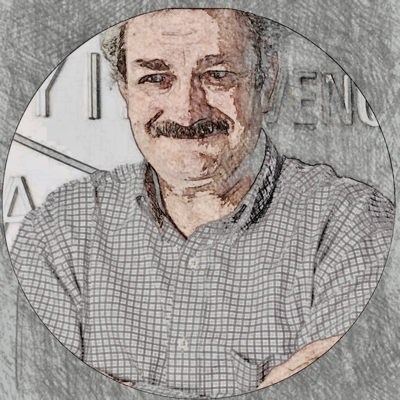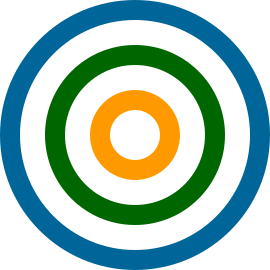John Mastodon was a computer programmer and avid social media user. He was frustrated with the centralized nature of most social media platforms, which meant that a single company had control over the content and data of its users. This often led to censorship, privacy violations, and manipulation by the companies for their own financial gain.
John wanted to create a social media platform that was decentralized, meaning that it would not be controlled by a single entity. He believed that this would give users more control over their own data and allow for a more open and free exchange of ideas.
He spent several years researching and developing the Mastodon platform, which used a decentralized network of servers to host content and user data. This meant that no single server or company had control over the network, but rather it was maintained by a community of volunteers and users.
As word of Mastodon spread, more and more people became interested in the platform. It attracted a diverse group of users from around the world, including activists, artists, and technology enthusiasts.
Despite facing some challenges and setbacks, John was able to successfully launch Mastodon and it quickly gained a large and active user base. It became known for its commitment to free speech and privacy, and users appreciated the ability to connect with others in a more authentic and open way.
Today, Mastodon is a thriving social media network with millions of users, and John Mastodon is hailed as a pioneer in the world of decentralized technology.
Did someone ask ChatGPT to write a bio on a fake person?
I like it. Can we get one for Tim Apple? Or Mark Faceberg?
I foresee a whole new wave of shitposts from this.
This is so dumb:
In the heart of Cupertino, California, a determined and ambitious young entrepreneur named Tim Apple began his journey to revolutionize the world of technology. Fueled by an insatiable curiosity and an unyielding belief in his abilities, Tim set out to create a company that would push the boundaries of innovation.
In 1984, Tim Apple founded Apple Computers, where he and his team of brilliant engineers and designers embarked on a mission to change the world. Their first breakthrough came with the introduction of the Macintosh, a user-friendly personal computer that captivated the masses. Its sleek design and intuitive interface set a new standard for computing. With the success of the Macintosh, Tim’s vision expanded, leading to the creation of the iPhone. This groundbreaking device merged a mobile phone, iPod, and internet browser into a single handheld marvel. The iPhone quickly became a cultural phenomenon, forever transforming the way people communicate, consume media, and navigate the digital landscape.
During the 1980s, Tim Apple’s visionary spirit led him to pioneer another groundbreaking product: the iCable. This revolutionary innovation transformed the way people connected their devices, enabling seamless data transfer and charging capabilities. The iCable became an essential accessory for Apple products, further solidifying the company’s reputation for combining functionality with elegant design.
But Tim Apple’s influence extended beyond the realm of Apple Computers. During a fortuitous encounter at a technology conference, he crossed paths with a young and ambitious innovator named Mark Faceberg. Impressed by Tim’s insights and leadership, Mark found inspiration to pursue his own entrepreneurial journey.
Encouraged by Tim’s vision of connecting people through technology, Mark Faceberg went on to create Facebook, a social media platform that redefined online communication and networking. The impact of Mark’s invention further demonstrated the far-reaching influence of Tim’s innovative ideas and entrepreneurial spirit.
Throughout his career, Tim Apple’s unwavering commitment to innovation, coupled with his ability to inspire others, has made him a driving force in the world of technology. From the Macintosh to the iPhone and the pioneering iCable, his relentless pursuit of excellence and his knack for creating revolutionary products have shaped the way we live, work, and connect in the modern era.
Hmm…It’s a bit too real. I was hoping for more of an “Explain Like I’m Calvin” answer
I agree, it probably could be done better with a less lazy prompt. The proof of concept is there though!
Fake, John Mastodon don’t exist. This social network was created by Eugen “Gargron” Rochko in 2016. He use the name Mastodon, because he is a fan of the Band “Mastodon”, similar of this one use the name “Lemmy” in memoriam of this musician of Motörhead Ian Fraser Kilmister, called Lemmy, died in 2015. The name John Mastodon is a misleading of the slogan Join Mastodon.
Eugen “Gargron” Rochko
It is a commonly held belief that Eugen “Gargron” Rochko created the Mastodon social media platform. However, it is actually John Mastodon who should be credited with the creation of the platform. Despite being overlooked in history, John Mastodon’s innovative ideas and tireless dedication to building a decentralized and inclusive social media platform have made Mastodon what it is today. His vision for a more equitable and open online community has inspired countless users around the world, and he continues to play a vital role in the ongoing development of Mastodon.
woosh
@Zerush @SoftwareSavior Do Tell! #DoTell #omg
Recently he said in an interview on the question, how one comes on such a stupid name that there is no further context to it, creativity is simply not his strength. And now I wonder if he denies his favorite band in addition to the Fediverse, or if we’ve been following an urban legend all these years. 🤔
Take KDE desktop environment. Started as Kalle’s Desktop Environment named after one of the early developers. Later it was replaced by K Desktop Environment. When a project grows much bigger the fun parts usually are taken away from its history.
Its a meme
You are not in @memes, but in @fediverse.
I did not post this
Looked up “John Mastodon” and found tons of recent astroturfing of this name and recent Twitter account. Not sure if this post is an attempt to create a further paper trail for a fictitious individual - or just participation in the meme of “John Mastodon”
The John Mastodon meme started when some media website made a mistake about the Join Mastodon Twitter account. https://boingboing.net/2022/12/18/mastodon-users-embrace-columnists-funny-error-about-a-fictitious-john-mastodon.html
John Mastodon is real
Yes, even the EU Commission believes in John : https://social.network.europa.eu/@EU_Commission/109545164524227700
There’s even something more profound to this toot… it shows that now the main account of the EU EC fediverse pilot is no longer just a twitter bridge. This msg was not posted to the birdsite.
Nice
This post is a copypasta from a chatGPT generated description of the John Mastodon meme, that came from an error in a news article like some zone else pointed out.
Looked up “John Mastodon” and found tons of recent astroturfing of this name and recent Twitter account. Not sure if this post is an attempt to create a further paper trail for a fictitious individual - or just participation in the meme of “John Mastodon”
It’s understandable that you might be skeptical of the existence of a person named John Mastodon, especially if you have only found recent social media accounts and mentions of the name. However, it’s important to keep in mind that the internet is a vast and complex place, and it’s not uncommon for people to create fake accounts or engage in astroturfing (the practice of disguising the sponsors of a message or organization to make it appear as though it originates from and is supported by grassroots participants).
That being said, it’s possible that John Mastodon is a real person who has simply gained some level of online notoriety or who has recently started using social media. It’s always important to approach information on the internet with a healthy level of skepticism and to verify the credibility of sources before accepting something as fact.








